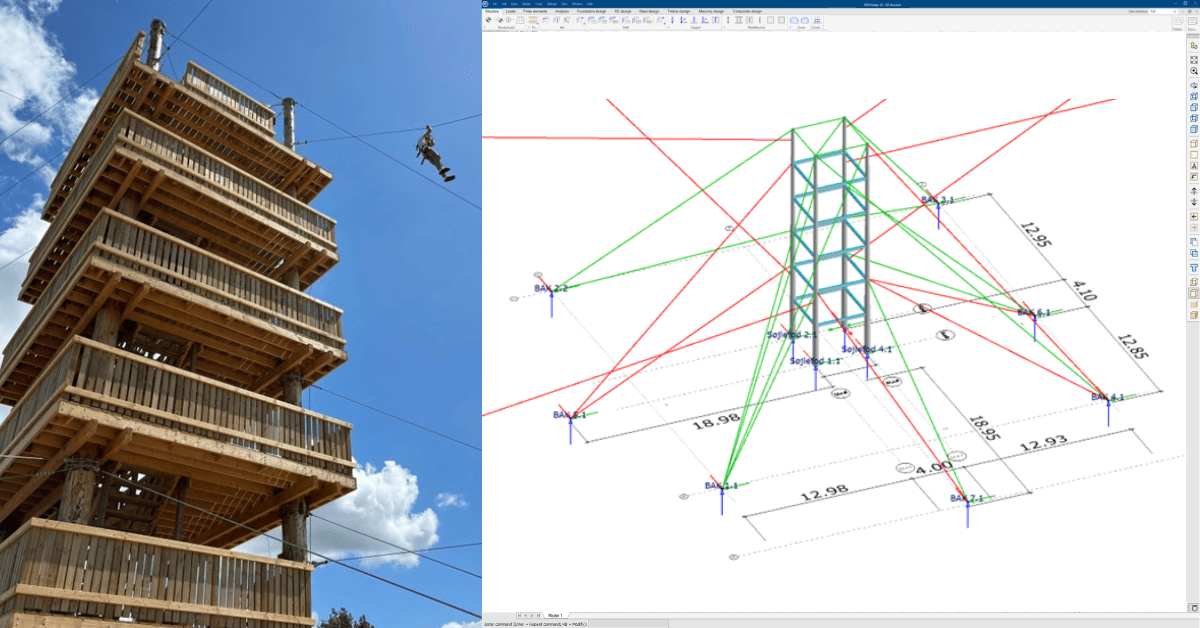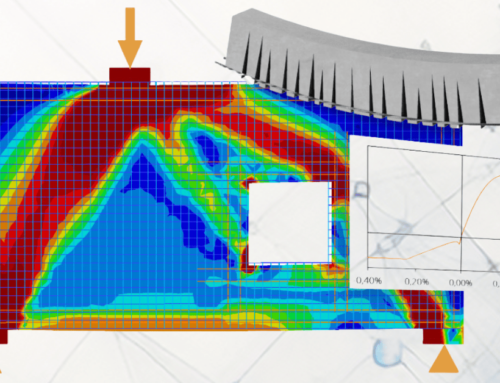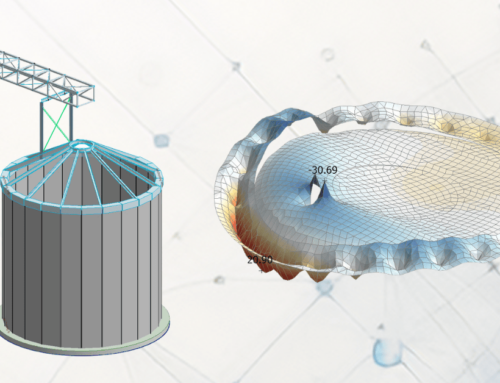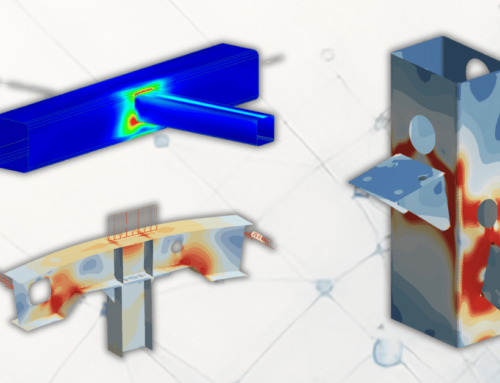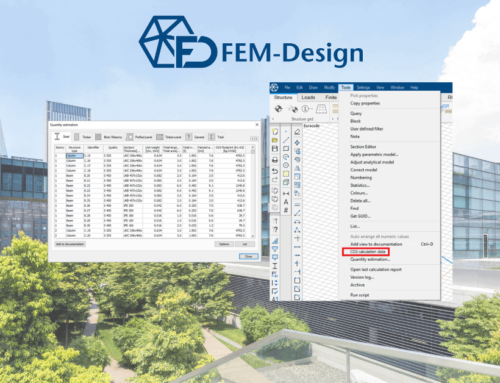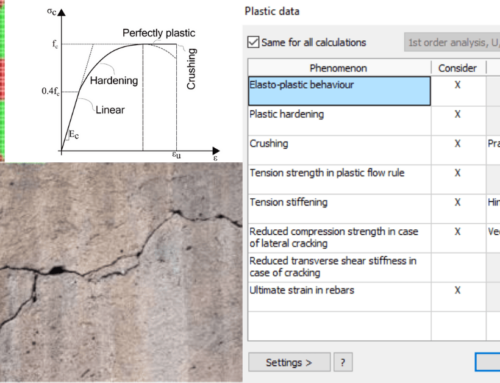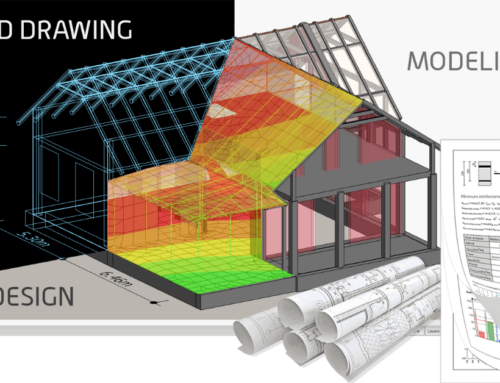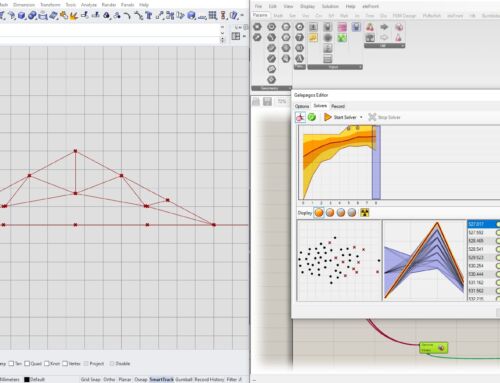FEM-Design 23 is released and introduces a brand-new 3D Bridge module, a new plastic analysis method, a renewed documentation module, and several significant improvements for enhancing your daily experience with FEM-Design.
The latest version of FEM-Design redefines efficiency as we know it. As always, we’re committed to providing great software functionality for our users. Explore the top developments in FEM-Design 23 that will give you a competitive edge in your structural engineering projects.
KEY FEATURES OF FEM-DESIGN 23

Introducing a new module tailored for road, railway, and pedestrian bridges with moving load automation to calculate traffic load envelopes based on influence lines or surfaces. Designed for modelling speed, transparency, and precision, it offers bridge engineers the perfect easy-to-use tool for everyday tasks.

FEM-Design 23 introduces a new analysis module for computing shells made of reinforced concrete and structural steel in an elasto-plastic manner. This will help you optimise material usage by offering a more realistic material behaviour than a linear elastic material model.

The Documentation module in FEM-Design 23 has been significantly renewed and improved. It is more intuitive, efficient, and easy to work with for a streamlined workflow, saving you time and energy and allowing you to focus on the real task at hand – the structural design.
Experience FEM-Design 23 firsthand with a free, non-binding new features demo. Book your exclusive demo with one of our consultants.
3D BRIDGE
Introducing a new 3D Bridge module designed to simplify the everyday tasks of bridge engineers. Discover the new specialised load pattern tailored to determine the most unfavourable load system and its position for road, railway and pedestrian bridges according to Eurocode.
- Moving load automatisation – Effortlessly simulate and analyse moving loads and get complete control with user-friendly and powerful tools.
- Influence line and surface calculation – Results are based on influence lines or surfaces for shells and bars.
- Traffic load envelopes – Stay at the forefront with our new traffic load envelope feature, providing bridge engineers with a versatile toolkit for various load scenarios.
PLASTIC ANALYSIS FOR CONCRETE SHELLS
With FEM-Design 23’s newest elastoplastic method for computing 3D shells of reinforced concrete and structural steel, you get an accurate and realistic structural analysis that offers you material savings and safety.
- Get more accurate and realistic load-bearing capacities and deformations for your structures.
- Improve your concrete design by considering redistribution of forces due to cracks, plasticity in concrete and reinforcement, concrete crushing, tension stiffening, and plastic hardening.
- Save time and money by utilising reinforced concrete more efficiently.
NEW DOCUMENTATION MODULE
The Documentation module in FEM-Design 23 has been significantly renewed and improved, making the whole process faster and simpler. Experience the joy of using an intuitive tool to create clear and engaging documentation.
- Save time with the significantly faster documentation process and management.
- Create and manage several document Reports in one model’s Documentation module. Each Report has separate settings, table of contents, and page numbering.
- Write and insert any text into the Documentation with the new rich text editor and use tables to sort and format results.
RESULTS VISUALISATION
Benefit from an improved experience with results visualisation. In FEM-Design 23, you get access to new features and improvements crafted for model reviewing, comparing results, visualisation, and much more.
- Calculate the integrated force from selected objects with the new Virtual Bar feature.
- Document the overview of the forces in a structure by rotating diagrams with the new in-plane diagram position feature.
- Take advantage of the improved features for model viewing, labels and result display.
PLASTIC SHELL MODELS IN STEEL DESIGN
Take your steel detail design to a new level by considering the effect of yielding with the new plastic calculation engine. The material model uses Von Mises failure theory and damage model with strain limits to ensure ductility.
- Yielding of plates with von Mises failure theory and custom strain limits for each element to ensure ductility.
- Check the ultimate capacity and rotational capacities of steel details and structures.
- Correct local and global behaviour of steel models.
ENHANCED INTEROPERABILITY
Structural engineers play a crucial role in BIM workflows as key members of interdisciplinary teams. FEM-Design 23 facilitates seamless collaboration through precise sharing and import of essential data in professional IFC-based processes, including:
- Exporting 3D reinforcement designed with FEM-Design, providing precise geometry and all relevant calculation data.
- Importing reference objects and data to assist in load specifications, covering functions, types and positions of spaces and MEP equipment.
- Quick and individually customisable manual conversion of reference objects into analytical elements.
Interested in finding out more about FEM-Design? Apply for a free trial!
YOUR FEM-DESIGN 23 RESOURCES
“I immediately felt it was user-friendly; you get fast changes and fast models on the fly. I’ve been a sole user in the beginning, but now it has been spreading through the engineers. It’s the appropriate software for various applications.”
“We use FEM-Design for both large and small projects. Everything from wooden constructions to concrete constructions, so it is a broad spectrum of all the major constructions that exist in Denmark.”
“I’m really happy with the collaboration we have. There’s a lot of support and there’s a lot of interest in listening to the customers. It’s been like this since I first started using FEM-Design many years ago. FEM-Design is my favorite software because it’s a powerful tool. It’s a tool that I can use for almost all scenarios I see in my daily work life.”
“It’s the best global analysis software for precast, that’s for sure, and that’s why we in Consolis use it for global design. So, we use exclusively FEM-Design. And compared to other global structural analysis software, the main advantage is all the tools and the functions that you have specifically for precast.”
“FEM-Design is a tool that can be used very easily and I learned it quite fast. And I’m still learning it because it evolves faster than I can learn. I use FEM-Design for global calculations and element calculations, together with other software, such as Frame Analysis and PRE-Stress when I need to design pre-stressed slabs.”
“I make global structural models in FEM-Design and also calculate everything from the global things to the smallest details. We used to have different finite element software, but we wanted something more powerful where you can not only get the forces but also calculate the members. The most popular finite element software in Scandinavia is FEM-Design and that’s how we came to know it. It had many features that our previous software didn’t have and so we just tried it for a big project, and we were amazed by how easy it is to use.”









